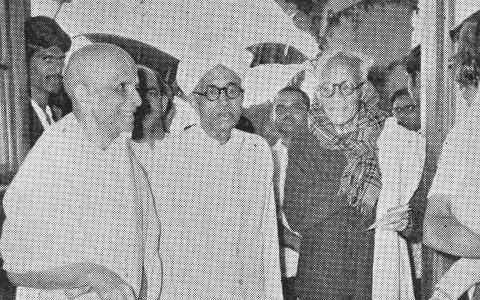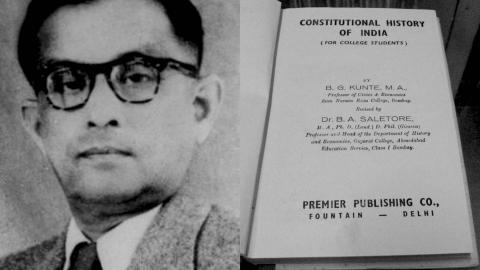November 2021

Rāma savoured the recital amid a large group of literary aficionados: sa cāpi rāmaḥ pariṣadgataḥ (1.4.36). This is arguably the best way to appreciate art because people with a refined aesthetic sense assist one another in discovering newer and newer subtleties, thus raising the level of overall enjoyment.
Uttarakāṇḍa has many interesting details about the recital of Rāma’s story by Lava and Kuśa. The presentation was as much...

Carrying with him the message of the deities, Nala entered the inner apartments of Damayantī and repeated the command of the deities. She heard those words and said, “Let the deities be how they are! Even so, Nala is my husband. I have no need for these deities!” Following this Nala introduced himself and then returned to Indra and the others; he narrated to them everything that had transpired. They said, “O noble one! You are an honest man and...

After gaining some composure he decides that bowl should have been taken by either a dog or a buddhist monk. While the comparison of a buddhist monk to a dog might seem preposterous, Satyasoma has his reasons which is the presence of roasted meat! This passage already hints at the kind of degeneracy which had crept in which is confirmed by the entry of Nāgasena which happens immediately as if by cue. Also note that later there is also the...

Tenderness of Mind
Sarma would never accept any opinion only on the ground that it was being followed from ancient times. This didn’t mean that he would oscillate on grounds of logic either. He always strove to establish the superiority of the emotional world. He emphasized emotional content over literal meaning.
Although most of the aspects that Sarma noticed, we would appear to notice too, we would realize its importance only after Sarma...

Vālmīki was absorbed in thoughts about his verse when Brahmā visited him: tadgatenaiva manasā vālmīkirdhyānamāsthitaḥ (1.2.28). He was tormented by the impropriety in hunting the male bird and the consequent anguish caused to its companion. Here is a poet mulling over the incident that inspires his poetry. If worldly events do not evoke such a profound response in a writer, they cannot inspire poetry. In its highest reaches, poetry is the...

Personality
Subrahmanya Shastry had a tall, sturdy, and handsome figure. He was radiant and could attract the onlooker’s attention even when he was in the middle of a few others. He was a living example for Kālidāsa’s statement - ākāra-sadṛśaḥ-prājñaḥ. He wore vibhūti on his between his eye-brows forehead in the mornings and a large horizontal sādu rest of time. His personality was such that people walking on the streets or those who spotted...

The Story of Dharmavyādha
In the past, when a certain sage who was wandering through a forest and sat down below a tree, a balāka bird’s droppings happened to fall upon him. He was enraged and stared at the bird angrily. As soon as his eyes fell on the bird, it got reduced to ashes. He felt proud of the strength of his tapas.
One day, he sought alms at the house of a brāhmaṇa in the city. The lady of the house said – “Please wait for a while; I...

The Kannada literary world was familiar with two works of the poet Janna[1], namely - Anantanātha-purāṇa and Yaśodhara-carita. Shastry published yet another work of Janna called Anubhavamukura, which runs to about 109 verses. The work is based on smara-tantra, i.e., kāma-śāstra. The publication of this work was an important contribution to the world of Kannada literature. It opened new doors for the study of the poet and his works. Shastry...


